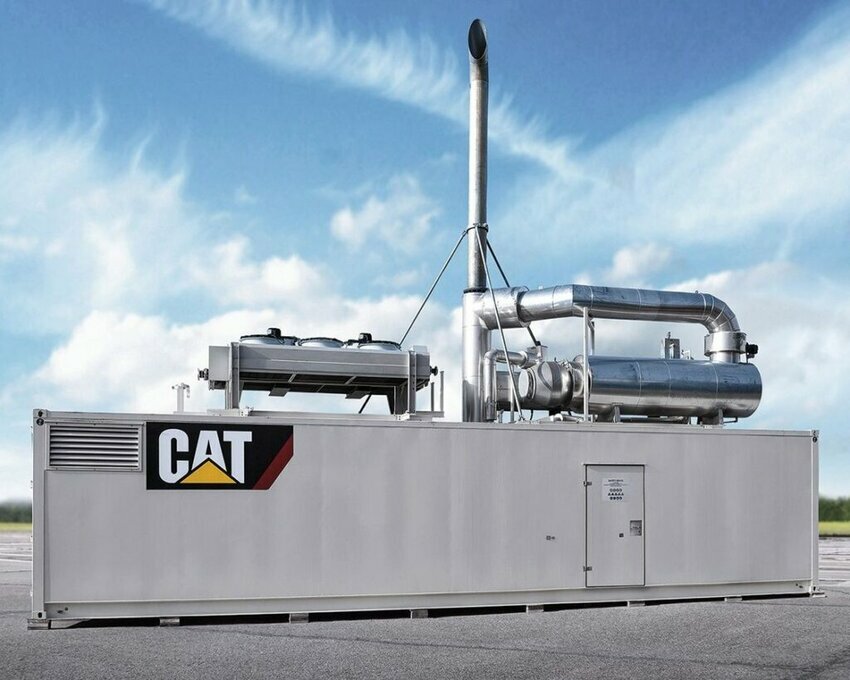 (Credit: Caterpillar)
(Credit: Caterpillar)A combined heat and power project -- using variations of hydrogen and natural gas with a potential capacity of 2 megawatts of energy -- is being undertaken by Caterpillar and District Energy St. Paul.
The companies will begin working on the combined heat and power (CHP) project during the second quarter of 2022 with installation and data collection beginning next year. They plan to develop a hydrogen-fueled power delivery and control system to study its greenhouse gas emissions as well as overall reliability, durability, and any possible barriers to adoption.
The companies use combinations of all hydrogen, all-natural gas, and natural gas blended with up to 25% hydrogen. The project will then compare how hydrogen and hydrogen blends can be integrated into a waste-heat-and-power platform.
Power and heat from the demonstration project will be fed into District Energy St. Paul’s distribution system to assess the hydrogen platform under real operating conditions. The three-year project is partially funded by the US Department of Energy’s Office of Energy Efficiency and Renewable Energy.
CHP produces electricity and thermal energy with high efficiency, according to the EPA, using heat that otherwise could be wasted. It can provide energy resiliency and be located at individual facilities, microgrids, and utilities to provide energy to multiple users, the EPA says.
During separate power and heat generation, nearly two-thirds of energy can be wasted. By capturing that otherwise wasted heat, CHP can result in an energy production that is 80% efficient compared with the 50% efficiency of more traditional methods.
The DOE sees CHP’s efficiency potential as a piece of energy transitions and has several programs to expand its use, including through its Better Buildings initiative. The CHP market is expected to grow at nearly 6% a year through 2026 and be valued at more than $35 billion, according to Research and Markets.
Caterpillar will use a flexible-fuel CHP system for the project that includes the Cat Master Microgrid Controller (MMC) and a Cat G3516 generator. The MMC will manage load dispatch requirements as the power system shows the performance, efficiency, and emissions characteristics of the platform, Caterpillar says.
Caterpillar has been active in CHP and last year introduced several natural gas generators, including the G3516. The company also has generators that operate on 100% hydrogen and green hydrogen.
District Energy St. Paul provides energy to downtown St. Paul, Minnesota, and surrounding areas. The utility says it reduced emissions by 68% between 2000 and 2021 and began using CHP in 2003, integrating renewable energy through solar thermal and biomass-fired heat and power projects to obtain nearly 50% carbon-free heat.